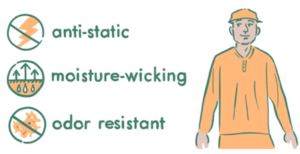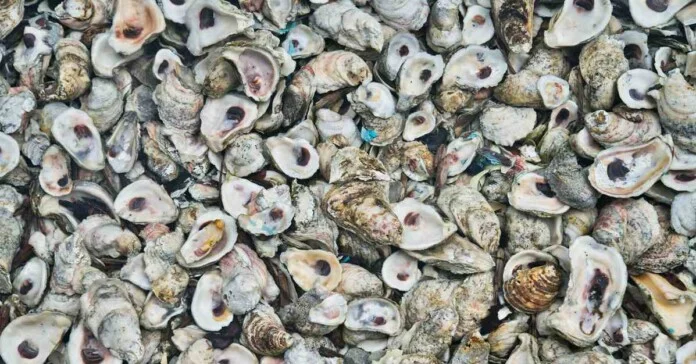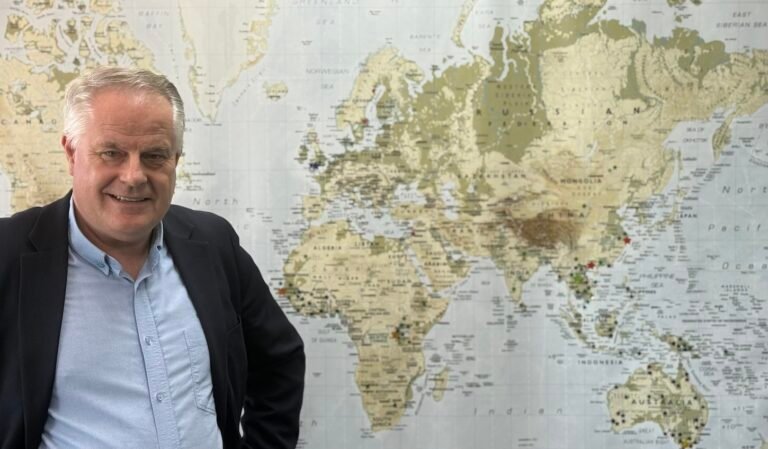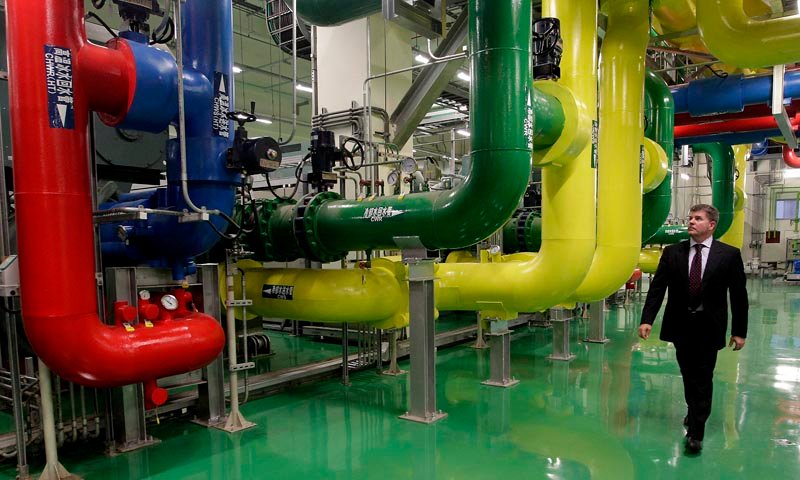Credit – Clint Patterson, unsplash CC 0.0.
When you think of Shells and Fashion, nostalgic fun images come to mind – doing more with less. Barbara Goalen is wearing the sea-shell dress from the series “Crazy Clothes”, photo by Zoltan Glass, June 22, 1950

But Shell-Fiber is the new innovation coming from Taiwan a circular solution for clothes and the Fashion Industry being responsible for nearly 10% of global carbon emissions, the waste of natural resources and the millions of clothes ending up in landfills every day.
According to the Taiwanese Department of Agriculture, 160,000 metric tons of mollusk shells are discarded annually from restaurant and fishing businesses.
Eddy Wang’s factory manufactures 900 tons of sea wool thread every year, and earns $6 million gross. The low-carbon resource does not use water during its production cycle and stores CO2 from the 160,000 yearly tons of shells discarded in Taiwan.
He’s using oyster shells—which when ground up and processed can produce a flexible yarn similar to sheep’s wool that’s been appropriately dubbed “sea wool.”
Eddie Wang grew up in western Taiwan, where oysters and other shellfish have long been a profitable and delicious local industry. The South China Morning Post reports that Wang first got the idea to turn the shells into a thread from lower-income locals who use crushed oysters to insulate their homes.
It was a great idea as it turns out, and materials scientists were keen to work with Wang to develop the industry and make it competitive with existing garment production.
A US textile company “Huckberry” has taken on board sea wool and developed it into a thriving green eco business.

By using ‘Seawool’, an innovative yarn created with upcycled oyster shells and recycled plastic bottles, they’re helping to close a loop that’s had a huge impact on the coastal communities we love. Instead of piling up, shells discarded by the food industry are now put to work in the soft, knit garments that protect us from chilly temps and coastal squalls. Temperature-regulating, moisture-wicking, quick-drying, antimicrobial, and oh-so-soft, they’ll serve you well for years while working toward a cleaner future for our waters.












